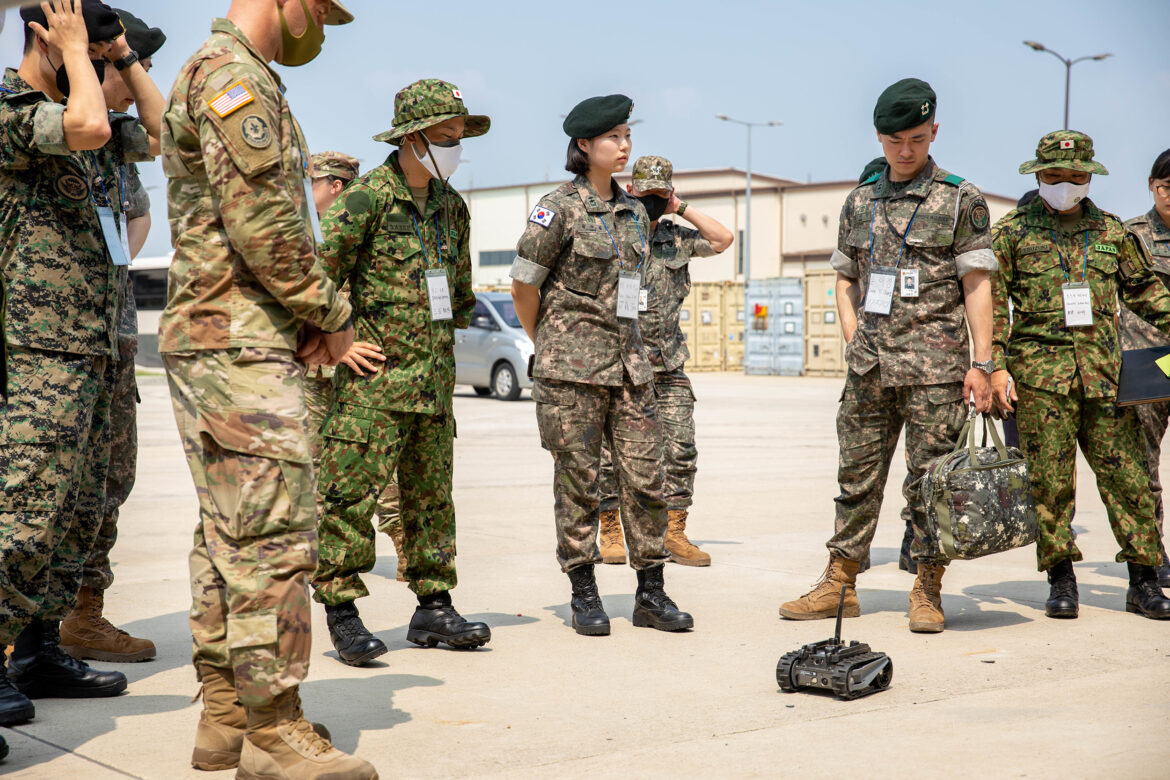Japan’s new prime minister, Sanae Takaichi, warned in her first policy address that “the military movements of China, North Korea, and Russia are becoming a serious threat,” and vowed to “strengthen cooperation with countries that share fundamental values.”
She also pledged to improve relations with Seoul, saying, “With South Korea, an important neighbor, I will work to strengthen ties through direct dialogue between the two nations’ leaders.”
She further described South Korea as “an important partner that must move forward together with allied nations,” signaling her intention to reinforce the framework of US–Japan–South Korea security cooperation.
For a politician who once suggested that, when Japan acts “half-heartedly” over Yasukuni Shrine visits, it “makes the other side forget its place,” a remark widely viewed as condescending toward South Korea, her current emphasis on dialogue with Seoul was striking.
It also underscored the gravity of the geopolitical moment confronting both nations.
A shifting balance in the Indo-pacific
This moment matters. For decades, both South Korea and Japan relied on the United States as the cornerstone of their security.
The “hub-and-spokes” system built after World War II created bilateral, not multilateral, ties – Washington at the hub, allies at the spokes.
That model worked under unchallenged American primacy. It no longer does.
China’s power keeps expanding. North Korea’s nuclear arsenal grows. Russia and China now conduct joint bomber patrols near Korean and Japanese airspace.
In this environment, a structure that prevents the two most capable Asian democracies from defending each other is strategically obsolete.
Complementing the US alliance
Washington has long pressed for deeper trilateral coordination because interoperability strengthens deterrence.
A recent CSIS assessment notes “new horizons” in Korea–US–Japan cooperation, building habits of combined operations, intelligence sharing, and crisis coordination.
A formal Korea–Japan military alliance would institutionalize joint early-warning systems, shared command protocols, and mutual support even if American forces are stretched thin.
Shared threat, shared responsibility
Neither country can manage the region’s threats alone.
Both countries face existential nuclear danger from North Korea and increasingly frequent air incursions by China and Russia. They also rely on vulnerable sea-lanes for energy supply, leaving their economies exposed to any regional conflict.
A bilateral military alliance would allow both nations to respond to these shared vulnerabilities through integrated missile defense, joint naval patrols, and cyber-defense cooperation.
Japan’s Aegis and blue-water capabilities complement South Korea’s growing strength in missiles, drones, and cyberwarfare.
The National Bureau of Asian Research notes that “the key factor in making ROK-US-Japan cooperation sustainable is the shared threat perception toward North Korea and China.”
Work is already under way. A Sejong Institute report calls the 2023 Camp David summit “a practical starting point toward the institutionalization of cooperation” among the United States, South Korea, and Japan.
Overcoming history for survival
History remains the greatest emotional barrier. Yet nations do not survive by clinging to the past; they endure by adapting to the future.
There are precedents. The Korea–Japan General Security of Military Information Agreement (GSOMIA) proved that mutual security interests can override political turbulence when necessary.
Tokyo’s Defense of Japan 2025 white paper states that, in responding to China, “Japan should act in cooperation with its ally, like-minded countries, and others.”The same report describes South Korea as “an important neighboring country and a partner with which Japan must cooperate to address various challenges facing the international community” – the second consecutive year Seoul has been called an “important partner.”
It highlights closer military coordination between the two countries, noting that after the 2024 Shangri-La Dialogue, both sides agreed such cooperation benefits both nations, strengthens US–ROK–Japan security ties, and is indispensable for a free and open Indo-Pacific.
The paper also warns that as threats such as North Korea’s nuclear program, terrorism, natural disasters, piracy, and maritime insecurity grow more complex, Korea–Japan cooperation has become increasingly vital.
It calls China “the greatest strategic challenge,” requiring continued coordination with allies and friendly nations.
The realist imperative
John Mearsheimer’s theory of offensive realism predicts that great powers seek regional hegemony and smaller states balance against them.
In East Asia, China’s ambitions fit that pattern. The rational response is alliance formation.
If Seoul and Tokyo remain divided, they invite coercion; if they unite, they restore balance.
Security before sentiment
The logic is clear. China’s rise, Russia’s assertiveness, and America’s fatigue have left East Asia exposed.
South Korea and Japan share the most convergent interests in the region. A military alliance would not erase history but secure their future – creating a shield that preserves autonomy, stability, and deterrence.
Strategic realism is not sentimentality – it is survival. A Korea–Japan alliance would turn two vulnerable allies into a self-reliant pillar of regional order, keeping the Indo-Pacific free even as American influence fades.
Hanjin Lew is a South Korean political commentator specializing in alliance politics and East Asian security affairs.


AloJapan.com